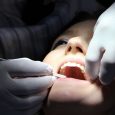Flossing your teeth is a pretty simple exercise. But when we actually set out to do it, it always seems to be more cumbersome than it actually is. You might be tempted to skip this step altogether after a while. Don’t succumb if you start to feel that urge.
Flossing is considered to be a vital part of a full mouth care routine by pretty much everyone, but especially dentists and periodontists. Harvard Health Publishing recommends flossing regularly to avoid gum disease, which can lead to a bevy of serious health issues, including an increased risk of having a stroke, developing diabetes, or having cardiovascular disease.

Of course, the number one method of avoiding not only periodontal disease but tooth decay, cavities, bad breath, and other oral care concerns is to regularly visit the best Ottawa dentist you can find.
If you live outside of Ottawa, try this convenient dentist finder for the rest of Canada.
In this article, we will put flossing under a microscope, exploring three simple steps you can take to help you floss like a dental pro, significantly reducing your risk of periodontal disease compared to not flossing, according to the American Academy of Periodontology, a group of over 8,000 preeminent periodontists.
1. Use the right kind of floss.
Business Insider has a great list of various flosses available for overall flossing, flossing for kids and with braces, all-natural floss, and floss for sensitive gums.
If you don’t feel the need for your floss to be all-natural and you don’t fall into the other categories, the Glide floss brand for flossing overall works well. You can choose from unscented or mint-scented, it is good for persons with tight spaces between their teeth, and is made thicker and softer than regular floss. It feels better sliding in and out of the spaces between your teeth, and also removes more plaque and food particles.
Choose the kind of floss that is right for you and your family by talking to your dentist.
2. Purchase a high-quality water flosser.
Water flossers, sometimes referred to as water piks after a popular brand name, go beyond normal flossing and use a narrow stream of water that is usually adjustable for pressure intensity.
The New York Times makes it easy to select a great water flosser, showing you best, runner-up, and honorable mention water flossers in this up-to-date article ranking the top ones to get. It’s an investment you won’t regret.
3. Use your water flosser, but still floss the traditional way.
Don’t replace traditional flossing with using a water flosser. Use them both, and your annual checkups at the dentist are sure to go easier.
The former is quick, does a good job of removing food debris that can lead to plaque, and is easy and painless. The latter, while somewhat cumbersome, will also be stress-free if you are using the right type of floss for your individual needs, and it provides the friction-based movement of the actual touch of material on your teeth and gums that you need to be a flossing-master.




